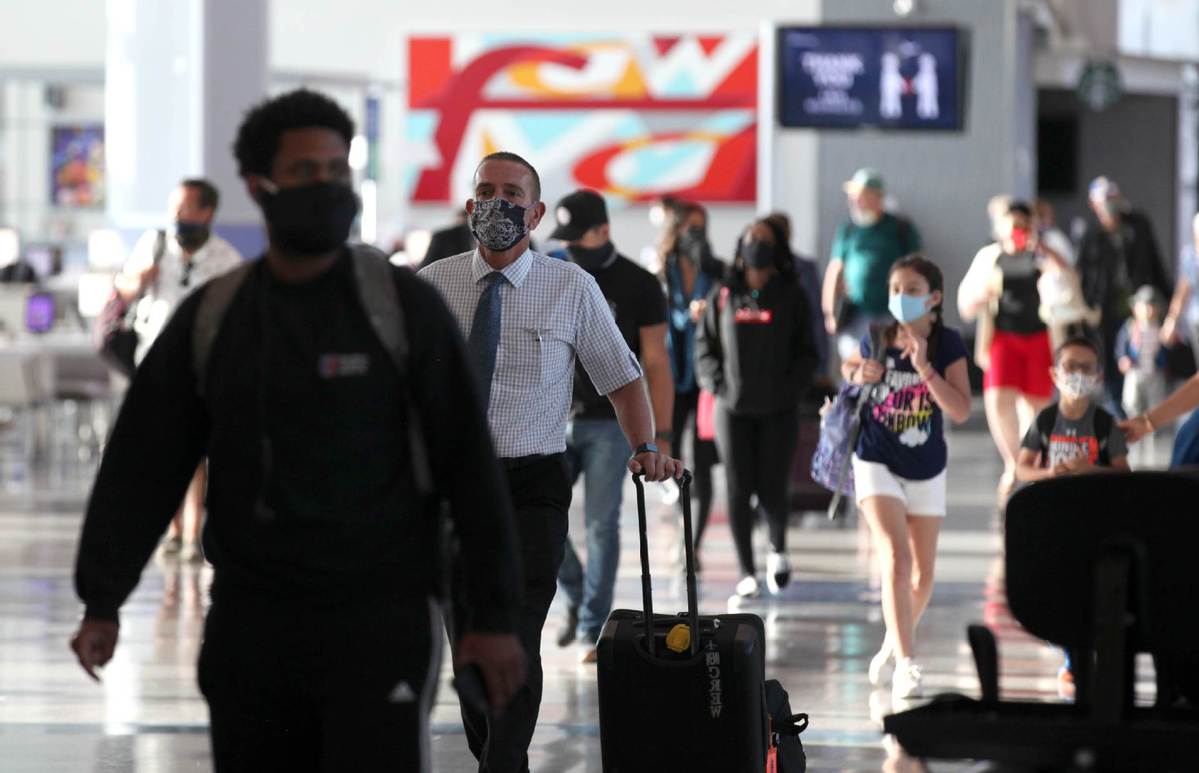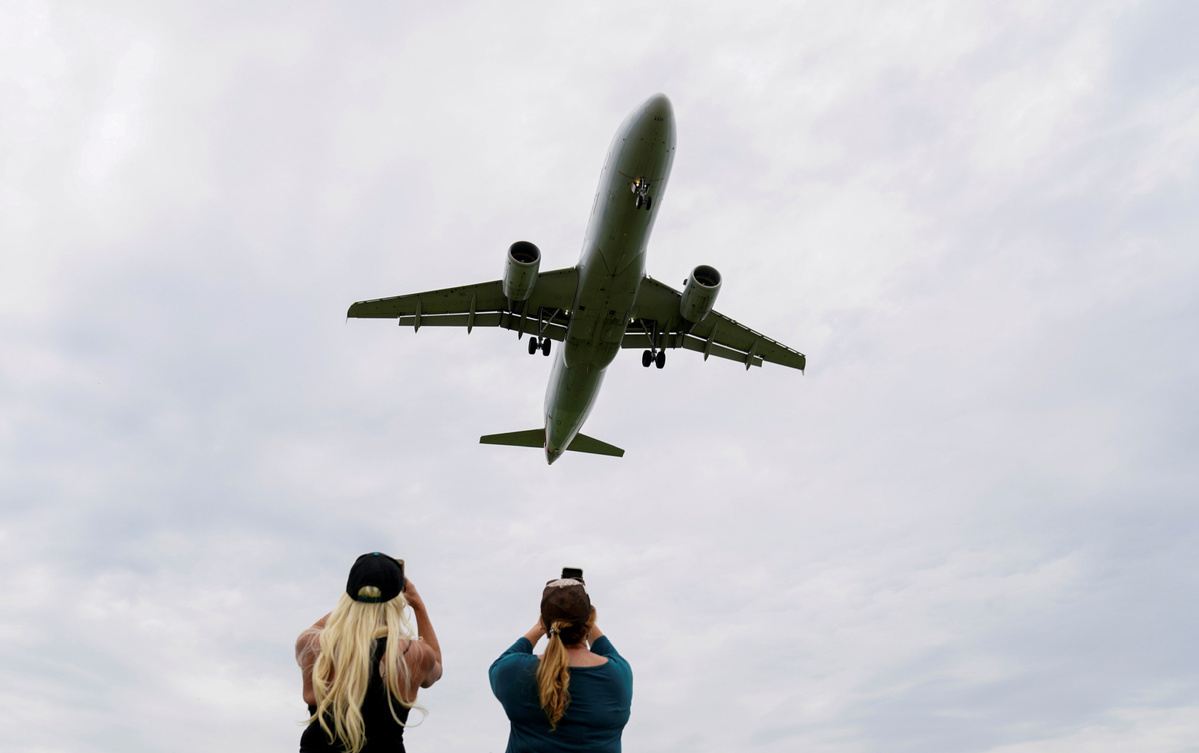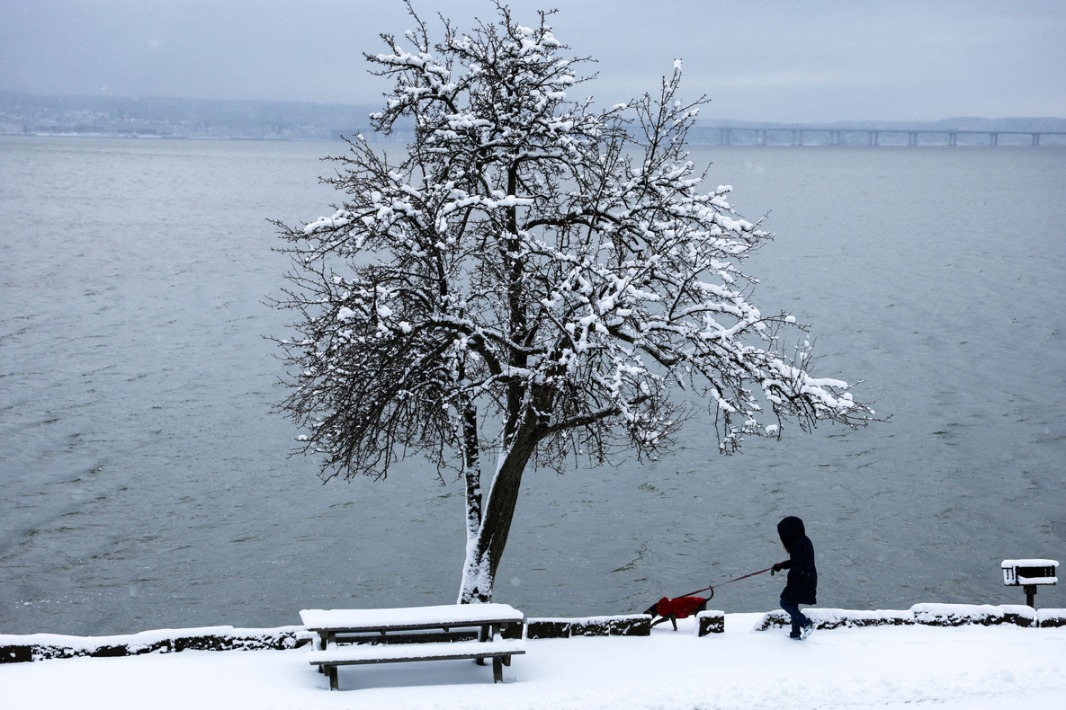Airline industry in US could be in flux after pandemic


The economic shutdown to curb the spread of the novel coronavirus has slashed US domestic air travel by about 98 percent, raising questions about the shape of the post-pandemic airline industry and the future of aircraft builders.
On April 7, the Transportation Security Administration (TSA) screened fewer than 100,000 passengers for the first time in its history, down from about 2.1 million who passed through airport checkpoints on the same day a year ago.
In response, airlines have grounded planes, furloughed workers and cut ticket prices.
A catastrophic reduction in the number of passengers could lead to mergers and a slimmed-down airline industry offering fewer flights, especially to second-tier cities.
The downturn also could mean fewer orders for new jets, a decision that would hammer Boeing and its European rival, Airbus.
Analysts at Cowan Group, a New York investment bank, estimate that about half of the world's aircraft fleet is grounded.
Upgraded Points, a website that helps travelers track and redeem their frequent-flyer credits, said the median price for a round-trip flight in the US has dropped to $163 from $309.
So far, lower ticket prices haven't been enough to entice passengers to book flights during the COVID-19 pandemic.
A survey conducted by Upgraded Points found that 20 percent of Americans don't plan to travel for the rest of the year. International travel is also down. The number of passengers flying between the US and China is down 97 percent.
It's unclear how the airlines will re-establish their networks, recall furloughed workers and rebuild revenue, analysts said.
The slimmed-down carriers may appear stronger, but it's unclear if they will have the cash reserves to expand quickly. It's also unclear what airlines would have to pay bondholders to secure financing. Higher bond costs could crimp the industry's rebound.

Most airline stocks are down significantly from their 52-week highs since the pandemic hit.
To rebuild revenue, airlines are likely to focus first on high-traffic routes between major cities. But in doing so, they risk eroding feeder traffic from smaller cities. Major hub-and-spoke carriers like United and Delta generate about half of their departures from regional airlines, analysts said.
That strategy may face obstacles because coronavirus infection rates are generally lower in small cities and sparsely populated states in the heartland and higher in major cities along the coasts.
The long-term implications of the downturn are also profound for aircraft builders.
According to media reports, American Airlines plans to continue through the summer of 2021 the retirement of older planes such as the Boeing 767-300, designed in the 1970s and certified for commercial service in 1982. But the carrier has no immediate plans to replace the old planes with new aircraft.
The decision to delay the purchase of new planes will hurt aircraft builders, especially Boeing, which still struggles with the worldwide grounding of its top-selling plane, the 737-MAX, after crashes in Indonesia and Ethiopia killed a total of 346 people.
Boeing has resumed production after a shutdown that led to furloughs of workers throughout the nation and its supply chain.
The Chicago-based company had hoped the Federal Aviation Administration would recertify the MAX for commercial service this summer, but there is no timetable for the plane's return to the sky.
In January, Boeing reported a loss of $636 million for fiscal year 2019, compared with a profit of $10.46 billion in 2018 ¬– its first annual loss in more than 20 years. Boeing suspended dividends in March.
The CEO and chairman of the board agreed to forego pay through 2020.
Prior to the outbreak, Airbus couldn't build planes fast enough.
But last month, CEO Guillaume Faury warned that the company was "bleeding cash at an unprecedented speed" and said the company's survival was at stake. He announced a 33 percent cut in production.
The federal Coronavirus Aid, Relief and Economic Security Act provided $58 billion to the airline industry, including $29 billion in support of carriers and an additional $29 billion in payroll grants.
Amid lost revenue, job cuts and the federal bailout, the downturn has created unexpected twists in the airline industry.
Carriers are stuck with unneeded in-flight food. Delta and American have donated thousands of pounds of perishable and non-perishable food to Feeding America's food banks to help the homeless.
The carriers also have donated food to hospitals and front-line healthcare workers.
After the Sept 11, 2001, terrorist attacks, passengers were limited to a maximum of 3 ounces of liquids in carry-on luggage. In response to health concerns, the TSA has relaxed the rule, and passengers are now permitted to pack as much as 12 ounces of hand sanitizer.
Chicago's O'Hare Airport, one of the nation's busiest, is nearly empty. There are no lines of people checking baggage at the counters or getting a seat assignment at a kiosk.
To maintain social distancing, a few passengers at a time are permitted down the ramp to board the plane.
"I feel like I'm in a Twilight Zone episode, Quinn Scannell, 21, told National Public Radio. "It's super eerie."

































